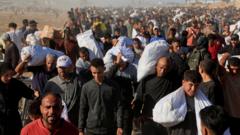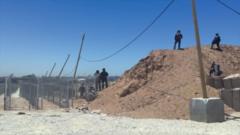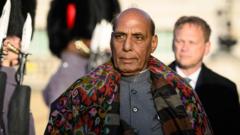In light of escalating internal violence from Islamist extremists and separatists, Pakistan has quietly adopted drone strikes as a counterinsurgency measure. This shift, reminiscent of past U.S. practices that Pakistan once criticized, has raised concerns about civilian casualties and the potential for further radicalization.
Pakistan's Covert Drone Operations: A Shift in Counterinsurgency Strategy

Pakistan's Covert Drone Operations: A Shift in Counterinsurgency Strategy
The Pakistani government has turned to drone warfare to combat internal militancy, despite previously condemning similar tactics used by the U.S., raising moral and strategic concerns.
In a significant shift from traditional military engagements, Pakistan is now employing drone strikes within its borders to combat internal threats from militants. This development comes amid rising Islamist militancy and ongoing separatist movements, contributing to the deteriorating security landscape in the country.
Historically, drones were a point of contention for Pakistan, particularly when the U.S. utilized them to target groups such as Al Qaeda and the Pakistani Taliban, often leading to civilian casualties. Despite vocal criticisms of these tactics, the Pakistani government has recently adopted a similar strategy in their counterinsurgency efforts. Official acknowledgment of drone operations remains limited due to the sensitive political implications, as the government seeks to navigate the repercussions of its internal security measures.
Though Pakistani officials have reported enhanced precision in their drone strikes, incidents of collateral damage have sparked concerns about the potential for backlash among the civilian population. Critics argue that repeated civilian casualties may inadvertently fuel further unrest and radicalization among disillusioned citizens towards the government.
The implications of this covert drone campaign suggest a complex interplay between security and public perception, underscoring the challenges faced by Pakistan as it grapples with internal divisions and the quest for stability. As this situation unfolds, it remains crucial to watch how this approach influences both the tactical landscape of resistance and the broader sentiments of the Pakistani populace.





















